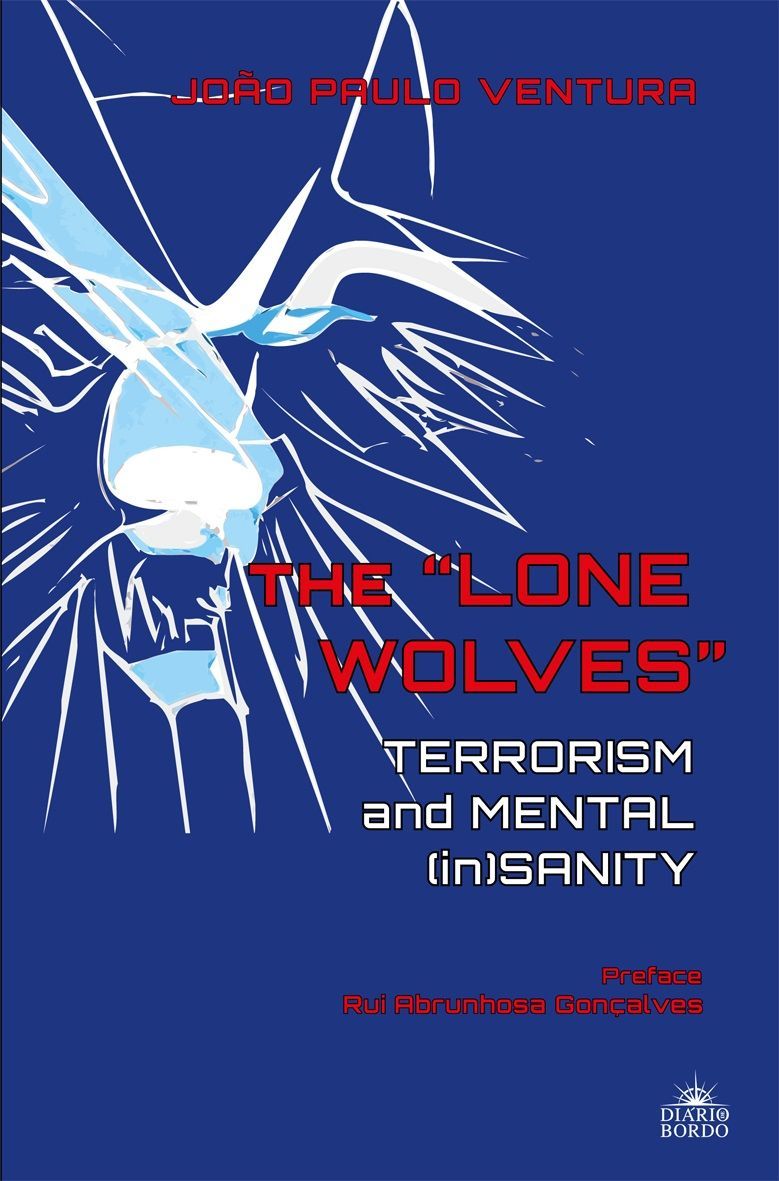
23€
João Paulo Ventura
English translation of "Os 'Lobos Solitários', Terrorismo e (in)sanidade mental".
ABSTRACT
The terrorist threat pending over Europe and the world, persists at a higher level. Amongst the main focus and sources of the threat, we should consider the ‘lone actors’ or ‘lone wolves’, independently from their respective ideological framework of membership. Terrorism and ideological extremism do not coexist in a vacuum as we refer to criminal phenomena somehow influenced, to a minor or major extent, by the political, social and even sanitarian dynamics, in a contemporary world of mutual and reciprocal growing closeness, in a society of communication and information. Thus, it would make sense, to propose the readers, in this essay, a short digression and overview throughout the phenomena and colateral processes to the issue of the terrorist threat, commencing with the pandemic caused by the appearence in the global epidemiological scene of SARS-COV-2 COVID-19 virus – proving, if any doubts were still pending, that today’s world is indeed global – which started in the early months of 2020 and still subsists on a planetary scale. Proceeding with the identification of other supervening threats and risks, notably those named under the suggestive epithet of hybrid threats. Finally, a little more current and critical, to be forecasted in the closest horizon, the war of aggression by the Russian Federation against Ukraine, lasting now for over than one year, with a number of immediate objective and consequences, not to mention any further ones, wich are not possible to foresee and anticipate at this stage. Returning to the ‘lone actors’, in this essay we hardly tried to produce a review of the core patterns of terrorism and violent extremism, in order to, within the discussion of some remarkable case studies, move away from the differentiated participation of solo terrorists – that being clearly the case of ethnonationalist and separatist terrorism and certainly, to a minor degree, the ideological inspired leftist, libertarian and insurrectionist terrorism – underlining that the epicenter of the threat is based and located in other distinct sectors and segments – at jihadist terrorism and of (alleged) any further religious motivation, in addition to the rightist terrorism. We have drawn upon the convergence between the individual terrorist performance – without obeying to instructions or to a hierarchical structure of command and leadership of a given terrorist organization – and mental health issues. In that vain, three categories are proposed, but not absolutely watertight and unquestionable: firstly, those who suffer from a severe or serious mental affection (psychotics) susceptible to grant them the status of non-imputability on the grounds of psychic anomaly (motive for exclusion of blame turning them absent of criminal liability); secondly, subjects suffering from antissocial personality disorders (psychopaths in particular) but still in a frame and record of imputability, since they do not hold disturbances of consciousness or of any other psychological basic functions; and finally a third category that we have mentioned as psychosocial disadjusted individuals: id est, actors whom are not necessarily affected by any psychopathological disorder, diagnosed and/or recognized as such from a nosological point of view, but are particularly predisposed, given their hard living conditions, in terms of marginality and seclusion, which might precipitate radicalization and accession to violent criminal behavior ideologically inspired and motivated. A description and narrative of various critical case studies has been accomplished. Episodes occurred in a number of countries across the Globe along the three most recent decades – appreciabilly since 1995 up to 2022 – ilustrating in a flexible way and subject to confirmation by mental health forensic specialists, those three above defined categories. To conclude, a brief appreciation of some new realities, threats and risks, by emphasizing the critical importance of the technological revolution and the modern capacities availabe in terms of communication on a global scale. Ending, as it appears to be curial and highly recommendable, with the identification of the mechanisms to prevent and respond. In that context, as we suggest in a subheading, prevention is key.
2
Faça uma transferência para o NIB
0033 0000 4549 1111 2170 5
(Azevedo Machado).
3
O seu livro será enviado pelos CTT no prazo máximo de uma semana.
Faça já a sua encomenda
Contactos
EDITOR,
Paulo Noguês
Telefone: +351 935 615 349
Email: pauloazevedonogues@gmail.com
EDITORA EXECUTIVA,
Elsa Páscoa
Email: elsa.pascoa.db.editores@gmail.com
ASSISTENTE EDITORIAL,
Joana Macedo Luís
Email:
joanaluis.db.editores@gmail.com
GERAL
Email: db.editores@gmail.com
Endereço: Apartado 25, EC Ericeira,
2655-999 Ericeira
Redes Sociais
FACEBOOK:
Diário de Bordo Editores
www.facebook.com/profile.php?id=100093669589972
INSTAGRAM:
diariodebordo.livros.editora
www.instagram.com/diariodebordo.livros.editora/
Diário de Bordo Editore | Todos os direitos reservados | Website by Site.pt

